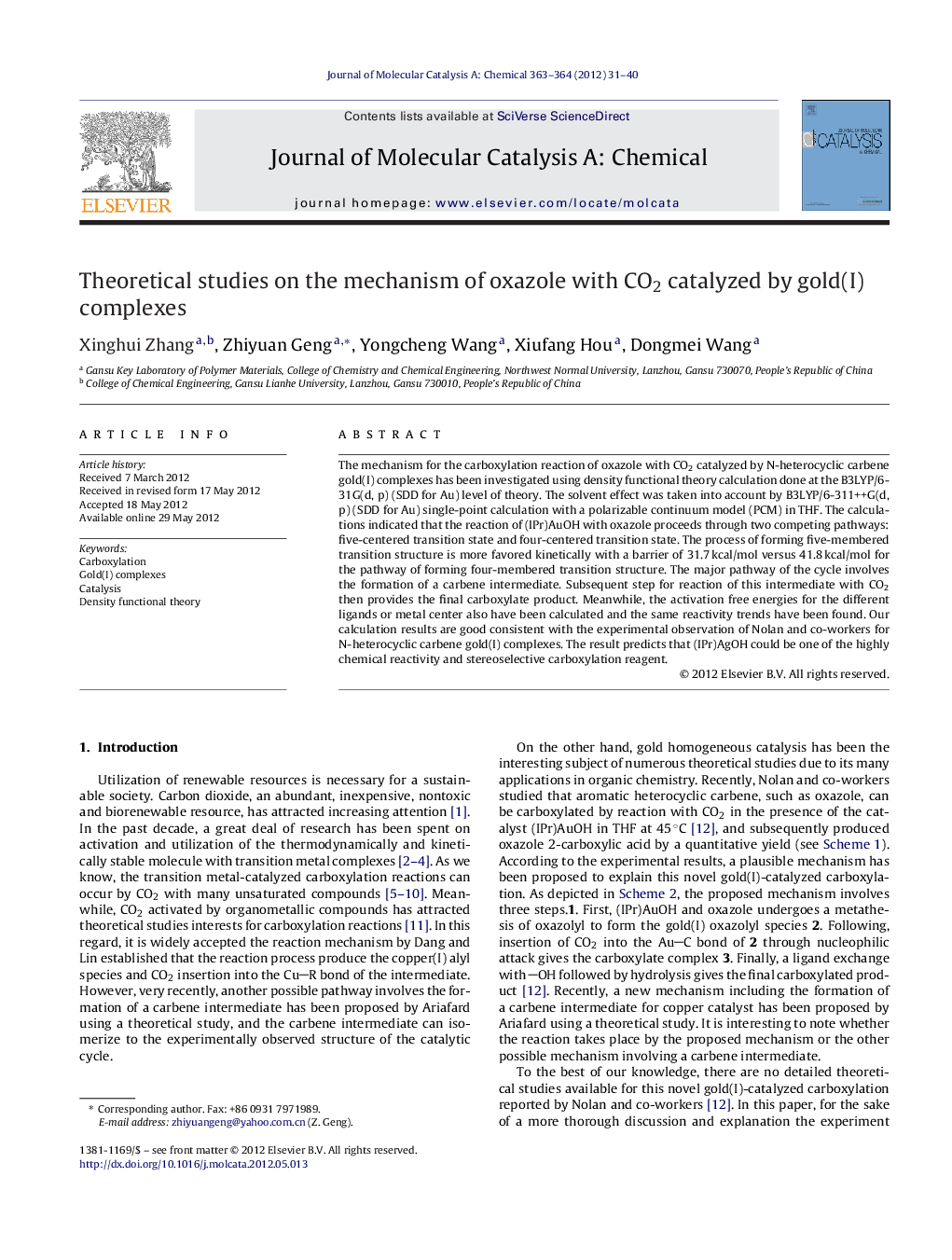| کد مقاله | کد نشریه | سال انتشار | مقاله انگلیسی | نسخه تمام متن |
|---|---|---|---|---|
| 66006 | 48413 | 2012 | 10 صفحه PDF | دانلود رایگان |

The mechanism for the carboxylation reaction of oxazole with CO2 catalyzed by N-heterocyclic carbene gold(I) complexes has been investigated using density functional theory calculation done at the B3LYP/6-31G(d, p) (SDD for Au) level of theory. The solvent effect was taken into account by B3LYP/6-311++G(d, p) (SDD for Au) single-point calculation with a polarizable continuum model (PCM) in THF. The calculations indicated that the reaction of (IPr)AuOH with oxazole proceeds through two competing pathways: five-centered transition state and four-centered transition state. The process of forming five-membered transition structure is more favored kinetically with a barrier of 31.7 kcal/mol versus 41.8 kcal/mol for the pathway of forming four-membered transition structure. The major pathway of the cycle involves the formation of a carbene intermediate. Subsequent step for reaction of this intermediate with CO2 then provides the final carboxylate product. Meanwhile, the activation free energies for the different ligands or metal center also have been calculated and the same reactivity trends have been found. Our calculation results are good consistent with the experimental observation of Nolan and co-workers for N-heterocyclic carbene gold(I) complexes. The result predicts that (IPr)AgOH could be one of the highly chemical reactivity and stereoselective carboxylation reagent.
Figure optionsDownload high-quality image (154 K)Download as PowerPoint slideHighlights
► We have carried out the first theoretical investigation for the carboxylation reactions of oxazole with CO2 catalyzed by Au(I) complexes.
► Our calculations suggest that the reaction system proceeds through two different channels. The step of forming a carbene intermediate is strongly favored kinetically.
► The paper calculated and compared the activation energies for the (IPr)MOH (M = Cu, Ag or Au) with different reactants.
► Our computational results are consistent with the experimental observations of Nolan and co-workers for N-heterocyclic carbene gold(I) complexes.
Journal: Journal of Molecular Catalysis A: Chemical - Volumes 363–364, November 2012, Pages 31–40